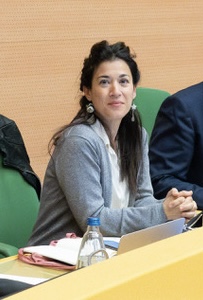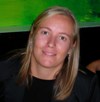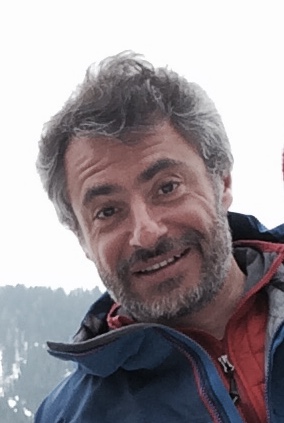Studying at the University of Verona
Here you can find information on the organisational aspects of the Programme, lecture timetables, learning activities and useful contact details for your time at the University, from enrolment to graduation.
Academic calendar
The academic calendar shows the deadlines and scheduled events that are relevant to students, teaching and technical-administrative staff of the University. Public holidays and University closures are also indicated. The academic year normally begins on 1 October each year and ends on 30 September of the following year.
Course calendar
The Academic Calendar sets out the degree programme lecture and exam timetables, as well as the relevant university closure dates..
| Period | From | To |
|---|---|---|
| Sem. 1A | Oct 4, 2010 | Nov 14, 2010 |
| Sem. 1B | Nov 15, 2010 | Jan 16, 2011 |
| Sem. 2A | Feb 21, 2011 | Apr 10, 2011 |
| Sem. 2B | Apr 11, 2011 | Jun 5, 2011 |
| Session | From | To |
|---|---|---|
| Sessione invernale (A.A. 2009-2010) | Jan 17, 2011 | Feb 20, 2011 |
| Sessione estiva (esami sospesi dal 5 all'8 luglio) | Jun 6, 2011 | Jul 31, 2011 |
| Sessione autunnale | Sep 1, 2011 | Sep 30, 2011 |
| Session | From | To |
|---|---|---|
| Sessione estiva - 1° appello | May 27, 2011 | May 27, 2011 |
| Sessione estiva - 2° appello | Jul 8, 2011 | Jul 8, 2011 |
| Sessione autunnale | Nov 18, 2011 | Nov 18, 2011 |
| Sessione invernale | Mar 16, 2012 | Mar 16, 2012 |
| Period | From | To |
|---|---|---|
| All Saints | Nov 1, 2010 | Nov 1, 2010 |
| National holiday | Dec 8, 2010 | Dec 8, 2010 |
| Christmas holidays | Dec 22, 2010 | Jan 6, 2011 |
| Easter holidays | Apr 22, 2011 | Apr 26, 2011 |
| National holiday | Apr 25, 2011 | Apr 25, 2011 |
| Festa dei lavoratori | May 1, 2011 | May 1, 2011 |
| Local holiday | May 21, 2011 | May 21, 2011 |
| National holiday | Jun 2, 2011 | Jun 2, 2011 |
| Summer holidays | Aug 8, 2011 | Aug 15, 2011 |
Exam calendar
Exam dates and rounds are managed by the relevant Humanistic Studies Teaching and Student Services Unit.
To view all the exam sessions available, please use the Exam dashboard on ESSE3.
If you forgot your login details or have problems logging in, please contact the relevant IT HelpDesk, or check the login details recovery web page.
Should you have any doubts or questions, please check the Enrollment FAQs
Academic staff
 stefania.annechini@univr.it
stefania.annechini@univr.it
Berra Michela
 avv.michelaberra@libero.it
avv.michelaberra@libero.it
 0161602819
0161602819
 nicoletta.bersani@univr.it
nicoletta.bersani@univr.it
Bisleri Carla
Chinato Maria Grazia
 machinat@libero.it
machinat@libero.it
 mario.dalcorso@univr.it
mario.dalcorso@univr.it
 roberto.dallachiara@univr.it
roberto.dallachiara@univr.it
 francesca.feliziani@univr.it
francesca.feliziani@univr.it
 laura.fontecedro@univr.it
laura.fontecedro@univr.it
Forato Gianna
 gianna.forato@univr.it
gianna.forato@univr.it
Frighetto Roberta
 roberta.frighetto@univr.it
roberta.frighetto@univr.it
 annamaria.giarola@univr.it
annamaria.giarola@univr.it
 raffaele.morello@univr.it
raffaele.morello@univr.it
 mauro.niero@univr.it
mauro.niero@univr.it
Rigoni Antonella
 maria.soldati@univr.it
maria.soldati@univr.it
Study Plan
The Study Plan includes all modules, teaching and learning activities that each student will need to undertake during their time at the University.
Please select your Study Plan based on your enrollment year.
1° Year
| Modules | Credits | TAF | SSD |
|---|
2° Year activated in the A.Y. 2011/2012
| Modules | Credits | TAF | SSD |
|---|
3° Year activated in the A.Y. 2012/2013
| Modules | Credits | TAF | SSD |
|---|
| Modules | Credits | TAF | SSD |
|---|
| Modules | Credits | TAF | SSD |
|---|
| Modules | Credits | TAF | SSD |
|---|
Legend | Type of training activity (TTA)
TAF (Type of Educational Activity) All courses and activities are classified into different types of educational activities, indicated by a letter.
Statistical methods for the social sciences (2010/2011)
Teaching code
4S02345
Teacher
Coordinator
Credits
6
Language
Italian
Scientific Disciplinary Sector (SSD)
SECS-S/05 - SOCIAL STATISTICS
Period
Sem. 1A, Sem. 1B
Learning outcomes
The course of Statistic Methods for the Social Sciences, proposes at first him to familiarize the students with the fundamental methodologies of the scientific search, gradually bringing them to the discovery of the connected problem list to the construction of the statistic information. Statistic methodologies will be drawn by the analysis of the necessities of synthesis and descriptive required by the data presents in the statistic collective. Potentiality and limits of the same will broadly be characterized. Some varying ones of demografic nature, even if not suitable expressly in the program they will serve as I support operational of the development of some methodologies.
Subsequently the important theme of the statistic inference is faced, deepening the competence already matured by the student in a circle fidescrittivo and allowing to gather more tightly him some application aspects of the subject. The student will enter the world of the probability in gradual way and progressively sharpening the knowledges pregresse. To face all these thematic rather complex, is only used besides the tools of elementary mathematical analysis, skipping limits, derived, integral etc that they overcome the least program of the senior high schools. Some concepts can be only intuitions, for others verifications will be developed to hoc, but in the big part of the cases the results gotten at the end of this teaching are substantially equivalent to those of a fundamental course of statistic.
To latere it is anticipated the special course of Laboratory of statistic Methods for the social sciences that it will allow him to directly verify the validity of all the methodologies and the models introduced to lesson besides allowing the student to deepen potentiality of a diffused spreadsheet.
Program
- Introductory general concepts: concept of Statistic, general definitions, the statistic surveys.
- Staircases of measure.
- The phases of the search: preliminary phase, of planning, the questionnaire.
- Survey: harvest, classification and tab of the data. Problem of the grouping of the data in classes; meaning of the frequencies and operatività of the same.
- Graphic representations.
- Averages of position. Fashion, Median and quartini.
- Elaboration of the data: the arithmetic average and his/her ownerships, the geometric average, the harmonic average. Relationships of composition, of derivation, of duration.
- The variability and his/her measure: I discard interquartile, varianza, middle quadratic discard, absolute middle discard and ownership of such measures.
- R of the gini
- Charts to double entrance and multiple entrance. Sign to the independence in such case.
- Cloud of points - Regression, non linear (sign) regression.
- Interpolating straight line - Coefficient of linear correlation and his/her meaning
- Parameters of the interpolating straight line gotten with the so-called one "method of the moments"
- Causal champion, tables of aleatory numbers, errors of survey in the investigations campionarie.
- Signs of calculation of the probabilities
- The probability according to the different theories
- Signs on some discreet causal variables: ipergeometrica, discreet uniform, Poisson.
- Some notable distributions: the normal distribution, the binomial distribution, the distribution the average's campionaria.
- Punctual respects.
- Degree of trust of the respects: concepts on the statistic inference, the appraisers' ownership, the punctual respect in the case of sampling bernoulliano, distribution of the middle campionaries
- The respect to alternate: interval of confidence for an average, for a frequency.
- The dimension of the champion.
- Verification of hypothesis in the case of a champion.
- The measure of the relationships of dependence in the case of two considered variables jointly: definition of statistic independence.
Texts for the examination:
Delvecchio Francesco, Statistica per la ricerca sociale, Cacucci Editore, Bari, 1987.
Examination Methods
And' obligatory the check written initial. Founding himself/herself/itself on the result of such test (what you/he/she can also be replaced by checks in itinere in accord between the Teacher and the students) the oral (not necessary if the vote is already positive) one will subsequently be developed.
Type D and Type F activities
Modules not yet included
Career prospects
Module/Programme news
News for students
There you will find information, resources and services useful during your time at the University (Student’s exam record, your study plan on ESSE3, Distance Learning courses, university email account, office forms, administrative procedures, etc.). You can log into MyUnivr with your GIA login details: only in this way will you be able to receive notification of all the notices from your teachers and your secretariat via email and soon also via the Univr app.
Student mentoring
Linguistic training CLA
Gestione carriere
Practical information for students
Documents
| Title | Info File |
|---|---|
|
|
pdf, it, 325 KB, 02/05/23 |
|
|
pdf, it, 212 KB, 02/05/23 |
|
|
pdf, it, 131 KB, 02/05/23 |
Graduation
Documents
| Title | Info File |
|---|---|
|
|
pdf, it, 99 KB, 13/10/23 |
|
|
pdf, it, 101 KB, 10/04/24 |
List of theses and work experience proposals
| theses proposals | Research area |
|---|---|
| Proposta tesi | Various topics |
Assistente Sociale
Comune e Università di Verona collaborano per la formazione alla professione di assistente sociale.
Professione Assistente Sociale
Pagina aggiornata il 18/1/2022
Stage e Tirocini
Le attività̀ di tirocinio degli studenti si svolgono presso strutture esterne, convenzionate con l’Università degli Studi di Verona ai sensi delle vigenti disposizioni in materia. Nelle strutture esterne gli studenti svolgono le attività di tirocinio sotto la responsabilità di un assistente sociale (Tutor-supervisore), appartenente a dette strutture, coordinato a sua volta dal responsabile del tirocinio presso il Corso di Studio.
In assenza di un assistente sociale, operante nella struttura esterna, il Collegio didattico, per quanto di competenza, decide, su proposta dei responsabili del tirocinio, in ordine alle condizioni per l’effettuazione o la prosecuzione delle attività di tirocinio degli studenti interessati. Le attività di tirocinio sono obbligatorie per almeno 450 ore.
Il Collegio didattico, in deroga alle disposizioni del presente articolo, può consentire a studenti che si trovino in particolari condizioni, in specie se disabili, lavoratori o impegnati in organismi collegiali dell’Università degli Studi di Verona, di non ottemperare in parte all’obbligo di frequenza alle attività di tirocinio, predisponendo forme alternative di tirocinio, anche tramite supporti telematici e multimediali interattivi.
I responsabili delle attività di tirocinio presso il Corso di Studio, anche avvalendosi di appositi collaboratori o tutori esterni, accertano la presenza degli studenti presso le rispettive strutture. A tal fine utilizzano un apposito libretto di frequenza per ciascuno studente.
Al termine dell’attività di tirocinio, lo studente deve presentare una relazione scritta al responsabile di tale attività presso il Corso di Studio. Lo studente elabora la relazione scritta, controfirmata dal Tutor-supervisore. La relazione finale viene valutata dal responsabile del tirocinio presso il Corso di Studio e deve tenere conto degli obiettivi prefissati dal Collegio didattico.
La valutazione viene attribuita al tirocinio nel seguente modo: sufficiente = 1; buono = 2; ottimo = 3; eccellente = 4 e verrà aggiunta alla media dei voti del curriculum al momento della discussione della tesi.
Gli Uffici della Direzione Didattica e Servizi agli Studenti predispongono la documentazione necessaria allo svolgimento delle attività̀ di tirocinio, comprese attestazioni e certificazioni.
Nel caso in cui lo studente partecipi a programmi di mobilità internazionale, le attività̀ di tirocinio vengono regolamentate come segue:
A – Lo studente svolge il Tirocinio presso la sede estera.
Se lo studente svolge il Tirocinio all’estero si ritengono assolti gli obbligo relativi al Laboratorio se:
- - lo studente aggiorna il proprio docente/tutor con brevi relazioni mensili da inviare mezzo mail, sull’andamento del lavoro svolto presso la sede estera;
- - produce una relazione finale completa del tirocinio svolto.
La valutazione finale del laboratorio di guida al tirocinio sarà̀ effettuata da parte del tutor del laboratorio sulla base della relazione dello studente tenendo conto della eventuale valutazione da parte del supervisore estero.
B – Lo studente non svolge il Tirocinio presso la sede estera.
Se lo studente non svolge il Tirocinio nella sede estera e lo deve fare al rientro:
lo studente effettua uno/due incontri individuali iniziali con il docente/tutor in cui predisporre quanto necessita per l’avvio del tirocinio e nei quali verranno forniti materiali, griglie ed eventuali testi di riferimento;
invia brevi relazioni mensili sull’andamento del tirocinio che sarà svolto in Italia al di fuori del periodo in cui si tiene il laboratorio di guida al tirocinio;
produce la relazione finale completa del tirocinio svolto”.
- Tutte le informazioni in merito agli stage per futuri studenti sono disponibili alla pagina Stage e tirocini.
- Tutte le informazioni in merito agli stage per studenti iscritti sono pubblicate in MyUnivr - come fare per - stage e tirocini.
- Tutte le informazioni in merito agli stage per le aziende sono disponili alla pagina Stage e tirocini per azienze.














